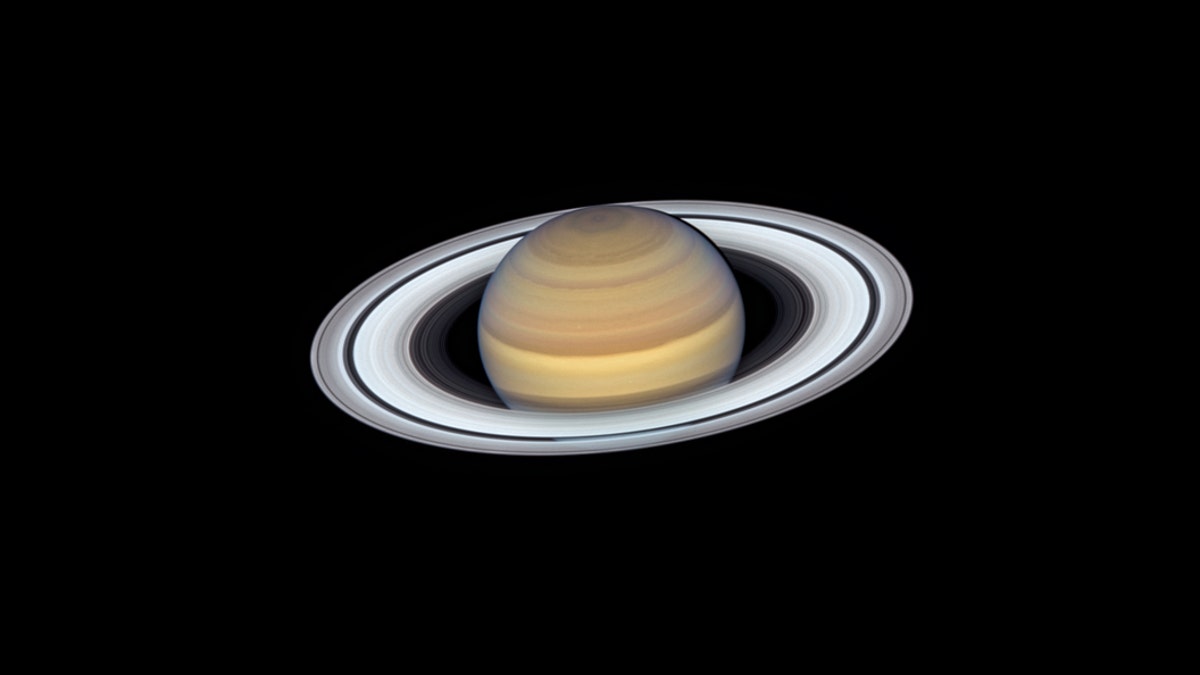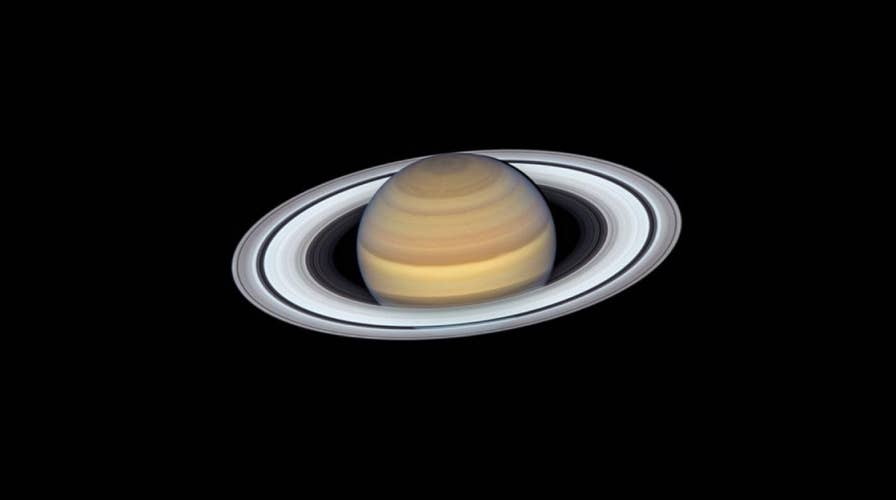Saturn shines in latest NASA image: 'Rings are still as stunning as ever'
NASA releases new images of Saturn. The photos taken from the Hubble telescope bring a new detailed look at the 6th planet from the sun.
Amateur astronomers in the Northern Hemisphere may be able to currently see Saturn, but NASA's Hubble Space Telescope has taken a series of images of the ringed planet that give new details about its rings, as well as its ever-changing weather.
In a blog post, NASA said the images snapped by the telescope "are more than just beauty shots," adding that they shed new light on a planet that has "a turbulent, dynamic atmosphere."
"This year's Hubble offering, for example, shows that a large storm visible in the 2018 Hubble image in the north polar region has vanished," the government agency wrote in the post. "Smaller storms pop into view like popcorn kernels popping in a microwave oven before disappearing just as quickly. Even the planet's banded structure reveals subtle changes in color."

The latest view of Saturn from NASA's Hubble Space Telescope captures exquisite details of the ring system — which looks like a phonograph record with grooves that represent detailed structure within the rings — and atmospheric details that once could only be captured by spacecraft visiting the distant world. (Credits: NASA, ESA, A. Simon (GSFC), M.H. Wong (University of California, Berkeley) and the OPAL Team)
SATURN'S MOON ENCELADUS COULD SUPPORT LIFE AS MORE EVIDENCE EMERGES
NASA also posted a video of the Hubble orbiting the moons of Saturn to its YouTube page.
NASA added that the images taken by the Hubble show that the "hexagon," the mysterious six-sided pattern is still there on Saturn's north pole. The hexagon, which is caused by a high-speed jet stream, was first discovered in 1981 by the Voyager 1 spacecraft.
The above image also gives new clarity to Saturn's rings, which NASA said are "as stunning as ever." It shows the ring system, which is largely made up of water ice, is tilted towards Earth. On June 20, 2019, Saturn made its closest approach to Earth, approximately 845 million miles away, the government agency added.
The sixth planet in the solar system continues to be a source of fascination for NASA. In June, the space agency unveiled the latest mission in its New Frontiers program, which is slated to explore Saturn's largest moon, Titan.
Known as Dragonfly, the mission will see a rotorcraft fly "to dozens of promising locations" on Titan, which could potentially support extraterrestrial life, after it arrives in 2034, following a 2026 launch.
The case for whether one of Saturn's other moons, Enceladus, could support life has strengthened after researchers determined its ocean is likely 1 billion years old, placing it in the sweet spot, according to research published earlier this year.





















